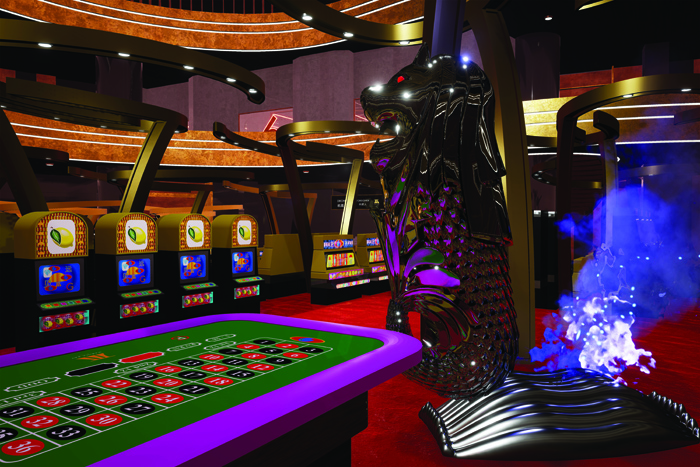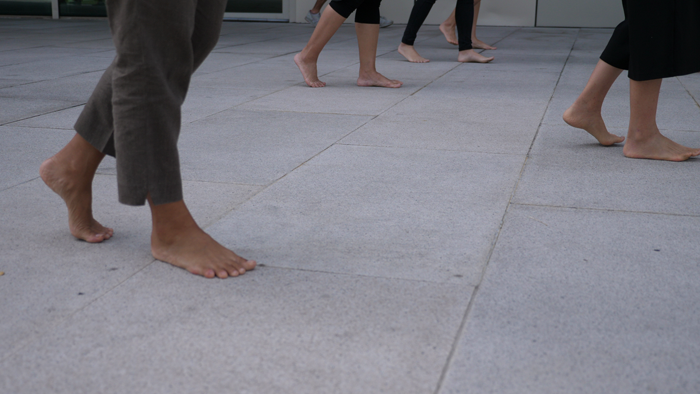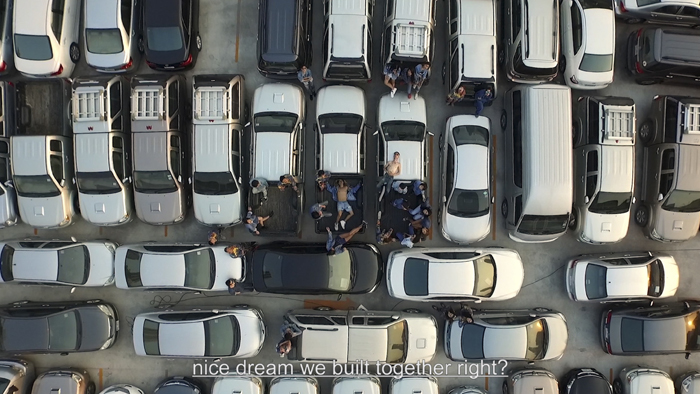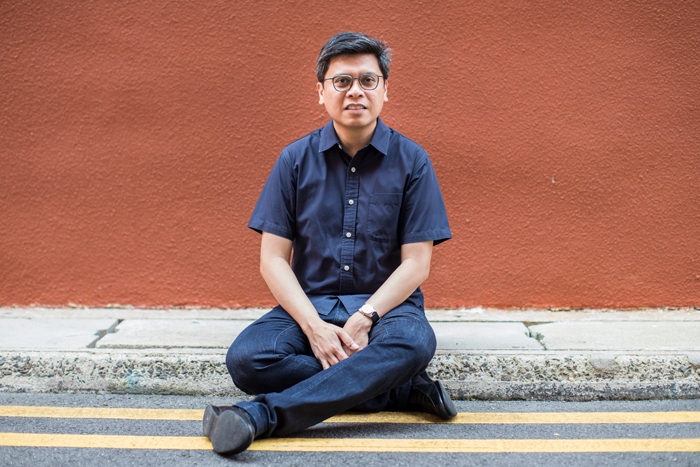Patrick D. Flores is artistic director of the Singapore Biennale 2019, which is scheduled to open across ten sites in the city this November. He is curator of the Jorge B. Vargas Museum and Filipiniana Research Center of the University of the Philippines, in Quezon City, Manila, where he is also professor of art studies. In addition he is an adjunct curator at the National Gallery Singapore.

ArtReview Asia: Maybe we should start with the title of your biennial – Every Step in the Right Direction. It comes from one of the most prominent female participants in the Sakdalista Uprising, but it seems to articulate a very positive viewpoint, even though you concede, in your curatorial statement, that the world right now is in a ‘troubled’ place. Why did you choose that?
Patrick D. Flores: First of all, I didn’t want a theme. I wanted a proposition and also an argument. So I thought of this line by Salud Algabre [1894–1979], a Filipina woman who took part in the revolt during the 1930s in the Philippines. The revolt was not successful in that it did not topple the government. But when she was asked by a historian in the 1960s what she did after the rebellion failed, Salud quickly corrected the historian, saying that no uprising fails, but that each one is a step in the right direction.
ARA: Do you think the same thing is true of biennials – that every biennial is one step in the right direction?
PF: Well… basically yes. In the sense that every effort first wants to make sense of the world today and try to afford ways to make a difference. So the energy, even the desire, contributes to a step towards something different, I’m quite optimistic about that.
ARA: Does that play out in your choice of artists?
PF: The optimism is for both the curatorial effort and the artistic effort. I believe that there is a desire on the part of contemporary artists to build on previous attempts.
ARA: You do include a few more historic positions within the biennial, such as Ray Albano’s [a Filipino painter, printmaker, photographer, filmmaker, critic, graphic designer, arts administrator, writer and poet born in 1947]. Does this mean that such work becomes a kind of starting point for it?
PF: The methodology comes from him, through Roots, Basics and Beginnings, the group exhibition that he curated in 1977 [at the Cultural Center of the Philippines where he was curator of the visual arts department and subsequently director]. At the time, he was trying to introduce the general public to contemporary art. And the general public, in his mind, needed to be initiated into how the contemporary works. So through those three words, ‘roots’, ‘basics’, ‘beginnings’, he was able to explain what’s happening in the world of contemporary art. Roots largely referred to ecology – where the work comes from – ‘basics’ had to do with predicting the future to materialise the form, and ‘beginnings’ pertained to the risks that the contemporary artist takes to put the work out there.
ARA: What kind of risks?
PF: Well, in the case of Albano, it might have been in the way in which the modern nation that was being generated behaved in relation to the local context in which the contemporary artist was situated, so there was some tension between that inheritance and also this adventure and desire to be distinct. It fell upon the artist to deal with this tension productively.
There is a realisation that global tends to be quite ‘thin’, that artists need to revisit what it means to be in a locality in order to achieve some kind of density in their work
ARA: Do you think that those kinds of tension – between being in a particular place and being in a particular time – have increased in the current globalised situation?
PF: Yes. I believe so. There is a realisation that global tends to be at some point quite ‘thin’. In the sense that artists need to revisit what it means to be in a locality in order to achieve some kind of density in their work, a density that enables them to survive the overdetermination of the global. This is not a naive reversal to localism, but a more complex understanding of what I call an extensive locality.
ARA: The locality of Southeast Asia is quite diverse in itself.
PF: Yeah, that’s right. The biennale gives us the opportunity to go beyond Southeast Asia, but I believe, as an artistic director, that Southeast Asia still has to be sharply profiled as a geography. So we maintain the focus on Southeast Asia, but try to extend into a wider context largely through the bodies of water surrounding it, which are the Pacific, the South China Sea and the Indian Ocean.
ARA: Obviously there are existing constructions of the regional identity, such as ASEAN, whose activities extended to art exhibitions. Is this something you are trying to build upon or reframe?
PF: Yes. There is an effort on our part to distinguish the geopolitical construction of Southeast Asia (determined in the postwar era by forces like the French, Americans and British) from a more geopoetic reworking of the region. This is one of the steps in the right direction: to remap a region that has been so controlled by colonialism and Cold War geopolitics.

ARA: Your programme also has an emphasis on maybe not having such a precious distinction between visual arts and the poetics of the world outside, in a way. It includes walks and festivals, for example. Are you making a case for the place of art being as much outside as inside the gallery or museum?
PF: The fact that the biennale is spread across 10 sites relieves it from the burden of a white-cube exhibition context and forces it to accept different contexts. It is challenging logistically, but curatorially it’s more interesting to be out there in the city than to be in one museum. So we are exploring the potential of this movement of people from place to place as a way of following through on this ‘every step in the right direction’ mindset. There is a festival context in the mere texture you experience while walking around.
Secondly we have the Coordinates Project section, which involves initiatives in Singapore that have invested in gathering people in their own way. So I’m working with a theatre group, the Projector (a cinematheque), Gelong (an alternative tour group), the Indian Heritage Centre and the NUS Museum, among others, which further widens the sphere of the biennale beyond the museum. Many of these spaces or organisations are working on performative projects, which further give the biennale a festival atmosphere. And thirdly there is the desire among the curators to include a project that can be activated during the biennale. So this could also be an entry point into the festival nature as well, and an interdisciplinary atmosphere. Imagine the biennale as a cross between a festival and a seminar. It’s like the Battambang Circus in Cambodia – a school in itself, but at the same time a lively performative event.
There is an effort on our part to distinguish the geopolitical construction of Southeast Asia from a more geopoetic reworking of the region
ARA: It seems on the one hand that this perhaps connects to the more diverse roots of the arts in Southeast Asia, where theatre and performance have played a big role historically, and in precolonial times. And on the other hand it works in contrast to what the museums are doing in Singapore, where everything is being centralised around more Western-type models.
PF: You are right about that. In fact, I’d like to recover that ecology that somehow gets streamlined or shifted by situations like the museum complex or the museum industry. Not that the museums don’t try hard to also recover that impulse, but I think that the biennale is in a better position to create that atmosphere because it’s not so wedded or bound to the bureaucracy – being a temporary or transient moment that can produce a different curatorial intelligence from what is in the bureaucracy. So the biennale must be more strongly placed to let that ecology play out.
ARA: It seems that some of the ways in which museums in the region are moving are related to academic distinctions between, say, anthropology, ethnology and art history, which might divorce things from the kind of general ecology you are talking about.
PF: Correct. That is largely a colonial legacy, this order of things or this taxonomy of objects. It can largely be traced to a colonial knowledge. It’s interesting that we are trying to free the objects from within the biennale at a time when Singapore is commemorating its bicentennial of the British occupation. So this is a way also to speak to the roots of modernity and the basics of representation in the museum.
ARA: That’s particularly interesting in a place that can celebrate the 50th anniversary of its independence from Malaya and those structures four years ago and then also celebrate its colonial roots now.
PF: Singapore has a distinct relationship with the colonial discourse that’s quite tied to the fantasy of modernisation and also of course towards status – it’s different from how, for instance, Filipinos or Indonesians would look at colonisation. So in a way, the quote from Salud Algabre, the woman who fought the Americans, becomes a voice of urgency in light of this reception of colonisation.
ARA: Given the different and complex histories of colonisation across Southeast Asia, how different do you think the national attitudes across the region are? The differences of language of course play a role here.
PF: In terms of how language shaped the current wisdom, and the idea of Southeast Asia as whole, the diversity is exceptional. But of course, artwork has a way of smoothing out the rough edges of difference. It’s difficult to respond to this diversity in the context of the biennale, but the curators were quite consciously looking at artists who were speaking in artistic languages that were nonnormative. We also looked at artists who might not survive the global translation in terms of artworld speak. So we were looking at craft, for instance, or performance, or some kind of added mixing that is not easily assimilated.
ARA: You’re consciously resisting this smoothing out? Particularly when it comes to Southeast Asia?
PF: Yes, especially because the region requires that consciousness, especially in the methodology, so we were quite attentive to the ecology of the art where creative form emerges. So the context is a territorial imagination, a certain sensitivity to heterogeneity or idiosyncrasy in the production of material. But having said that, the region has also coproduced modernity. So this is not simply to isolate the idiosyncratic or ethnic, for instance, from a larger history. We look at various processes through which forms are produced.

ARA: And do you think part of that is allowing the forms to be nondefinitive, so that they can be reinterpreted over time and in different contexts to avoid the kind of clear meanings that maybe nationalist forces or a national government might provide?
PF: Yes, it also comes from the geopoetic principal. As you release the region from geopolitics, so do we release it from this homogenisation of our artistic language through the exhibition system or the museum system. And so this is a culture also emerging from the ecology of the region. The structure of the museum is formidable. It’s difficult to dissolve it or to break it down in parts, no? Places like the National Gallery Singapore are so strong. So we’re looking at ways to introduce both urgency and delicacy without me trying to produce this avant-garde institutional critique. Because I’m not going in that direction. I think that’s not what the ecology calls for. I mean, the position of Salud that every step in the right direction affects both agency and patience. So I’m also trying to recover that patience, that sustainable, day-to-day struggle with institutions, not just to attack them. Because it fails anyway. You don’t have to bash it.
ARA: So, finally, who decides what the right direction is? I guess from what you’re saying, it seems like any direction would be the right direction.
PF: There is that sense, and I’m aware of a bit of a neoliberal interpretation of the line, in the sense that anything goes. But I explain to people that right direction makes sense only in the context of the step that one decides to take. And when one decides to take the step, one realises that other people are making other decisions with regard to the direction to take. So this initial methodology gives way to more difficult political work.
The Singapore Biennale 2019 runs from 22 November to 22 March
From the Winter 2019 issue of ArtReview Asia
